Listeria Adhesion Protein Induces Intestinal Epithelial Barrier Dysfunction for Bacterial Translocation
- PMID: 29606495
- PMCID: PMC6750208
- DOI: 10.1016/j.chom.2018.03.004
Listeria Adhesion Protein Induces Intestinal Epithelial Barrier Dysfunction for Bacterial Translocation
Abstract
Intestinal epithelial cells are the first line of defense against enteric pathogens, yet bacterial pathogens, such as Listeria monocytogenes, can breach this barrier. We show that Listeria adhesion protein (LAP) induces intestinal epithelial barrier dysfunction to promote bacterial translocation. These disruptions are attributed to the production of pro-inflammatory cytokines TNF-α and IL-6, which is observed in mice challenged with WT and isogenic strains lacking the surface invasion protein Internalin A (ΔinlA), but not a lap- mutant. Additionally, upon engagement of its surface receptor Hsp60, LAP activates canonical NF-κB signaling, facilitating myosin light-chain kinase (MLCK)-mediated opening of the epithelial barrier via cellular redistribution of the epithelial junctional proteins claudin-1, occludin, and E-cadherin. Pharmacological inhibition of MLCK or NF-κB in cells or genetic ablation of MLCK in mice prevents mislocalization of junctional proteins and L. monocytogenes translocation. Thus, L. monocytogenes uses LAP to exploit epithelial defenses and cross the intestinal epithelial barrier.
Keywords: Hsp60; InlA; LAP; Listeria monocytogenes; MLCK; NF-κB; bacterial translocation; intestinal epithelial barrier; mouse; tight junction.
Copyright © 2018 Elsevier Inc. All rights reserved.
Figures
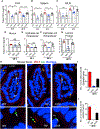
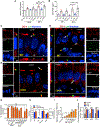

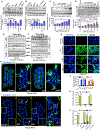
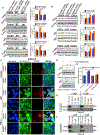
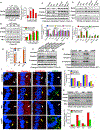
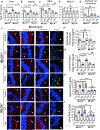
Similar articles
-
Listeria adhesion protein orchestrates caveolae-mediated apical junctional remodeling of epithelial barrier for Listeria monocytogenes translocation.mBio. 2024 Mar 13;15(3):e0282123. doi: 10.1128/mbio.02821-23. Epub 2024 Feb 20. mBio. 2024. PMID: 38376160 Free PMC article.
-
Listeria monocytogenes uses Listeria adhesion protein (LAP) to promote bacterial transepithelial translocation and induces expression of LAP receptor Hsp60.Infect Immun. 2010 Dec;78(12):5062-73. doi: 10.1128/IAI.00516-10. Epub 2010 Sep 27. Infect Immun. 2010. PMID: 20876294 Free PMC article.
-
Crossing the Intestinal Barrier via Listeria Adhesion Protein and Internalin A.Trends Microbiol. 2019 May;27(5):408-425. doi: 10.1016/j.tim.2018.12.007. Epub 2019 Jan 17. Trends Microbiol. 2019. PMID: 30661918 Review.
-
LAP, an alcohol acetaldehyde dehydrogenase enzyme in Listeria, promotes bacterial adhesion to enterocyte-like Caco-2 cells only in pathogenic species.Microbiology (Reading). 2010 Sep;156(Pt 9):2782-2795. doi: 10.1099/mic.0.036509-0. Epub 2010 May 27. Microbiology (Reading). 2010. PMID: 20507888
-
Understanding how Listeria monocytogenes targets and crosses host barriers.Clin Microbiol Infect. 2005 Jun;11(6):430-6. doi: 10.1111/j.1469-0691.2005.01146.x. Clin Microbiol Infect. 2005. PMID: 15882192 Review.
Cited by
-
Characterization of internalin genes in Listeria monocytogenes from food and humans, and their association with the invasion of Caco-2 cells.Gut Pathog. 2019 Jun 10;11:30. doi: 10.1186/s13099-019-0307-8. eCollection 2019. Gut Pathog. 2019. PMID: 31198443 Free PMC article.
-
Development and Characterization of an In Vitro Intestinal Model Including Extracellular Matrix and Macrovascular Endothelium.Mol Pharm. 2023 Oct 2;20(10):5173-5184. doi: 10.1021/acs.molpharmaceut.3c00532. Epub 2023 Sep 7. Mol Pharm. 2023. PMID: 37677739 Free PMC article.
-
Chemically programmable bacterial probes for the recognition of cell surface proteins.Mater Today Bio. 2023 May 23;20:100669. doi: 10.1016/j.mtbio.2023.100669. eCollection 2023 Jun. Mater Today Bio. 2023. PMID: 37334185 Free PMC article.
-
Innovative vibriosis control in open aquaculture: Paratapes undulata as a sustainable growth and resistance enhancer in red tilapia.Sci Rep. 2025 May 22;15(1):17750. doi: 10.1038/s41598-025-01026-x. Sci Rep. 2025. PMID: 40404688 Free PMC article.
-
Mechanical competition triggered by innate immune signaling drives the collective extrusion of bacterially infected epithelial cells.Dev Cell. 2021 Feb 22;56(4):443-460.e11. doi: 10.1016/j.devcel.2021.01.012. Dev Cell. 2021. PMID: 33621492 Free PMC article.
References
-
- Abreu MT, Thomas LS, Arnold ET, Lukasek K, Michelsen KS, and Arditi M (2003). TLR signaling at the intestinal epithelial interface. J. Endotoxin Res. 9, 322–330. - PubMed
-
- Bierne H, Mazmanian SK, Trost M, Pucciarelli MG, Liu G, Dehoux P, Jaansch L, Garcia-del Portillo F, Schneewind O, and Cossart P; European Listeria Genome Consortium (2002). Inactivation of the srtA gene in Listeria monocytogenes inhibits anchoring of surface proteins and affects virulence. Mol. Microbiol. 43, 869–881. - PubMed
-
- Bonazzi M, Veiga E, Pizarro-Cerda J, and Cossart P (2008). Successive post-translational modifications of E-cadherin are required for InlA-mediated internalization of Listeria monocytogenes. Cell. Microbiol. 70, 2208–2222. - PubMed
Publication types
MeSH terms
Substances
Grants and funding
LinkOut - more resources
Full Text Sources
Other Literature Sources
Molecular Biology Databases
Research Materials
Miscellaneous

